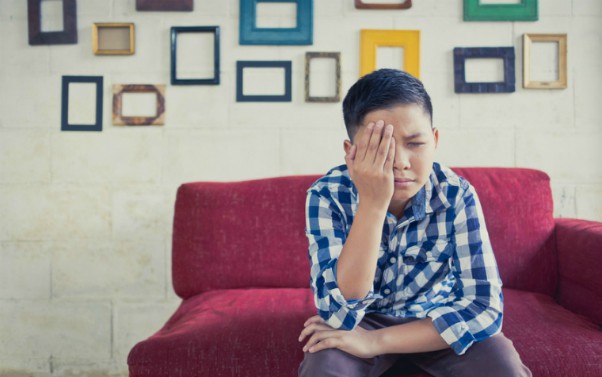
The 14-day isolation period required when children moved in secure homes during the pandemic increased anxiety and, in some cases, an increase in self-harm and physical attacks on staff, Ofsted said today.
Chief inspector Amanda Spielman said the requirement – set by Public Health England guidance – for children to self-isolate on arrival created a form of “solitary confinement” that had a negative impact on many children’s well-being and, in some cases, undermined their safety and that of staff.
The finding came in a briefing looking at the experiences of children in 12 of the 13 secure children’s homes (SCHs) in England and those cared for by 21 independent fostering agencies (IFAs), based on visits from 1 September to 4 December.
The briefing said children in SCHs sometimes experienced low moods and increased anxiety during periods of isolation or restrictions which, in some cases, led to increased self-harm and physical attacks on staff and other professionals. The 14-day isolation period also meant some children struggled to form new relationships when first arriving at SCHs.
Relationships undermined by staff absences
Children’s ability to form secure and lasting relationships with staff was also undermined by the fact that many SCHs were severely affected by absences and the use of temporary staff, due to self-isolation.
Two homes reported that at one point, there were 30 staff off sick which, in some cases, included senior leaders, contributing to a lack of stability. Absences were sometimes covered by agency staff or those from other services or children’s homes who had little knowledge or experience of working in a secure environment. This negatively impacted on children’s care because staff were not always equipped to deal with situations that arose, Ofsted said.
Amid the challenges, Ofsted found staff “generally showed an in-depth understanding of each child’s behaviours, risks and vulnerabilities”, with children having risk management plans in place to deal with self-harm. The briefing found staff made good efforts to help resolve children’s frustrations and make them feel safe, including by giving them sensory toys and activities, and regular access to health practitioners, during isolation periods.
To minimise the impact of staff absences, some SCHs organised staff into bubbles containing a mix of skills and experience, so children’s needs were still met if one bubble had to self-isolate.
Supporting contact
While PHE guidance meant children’s families were unable to visit them, Ofsted praised SCH staff for enabling children to keep in contact with loved ones, through video technology and providing technical advice to families.
Children were also given increased access to phones and other devices and, as restrictions were relaxed, outside spaces were used more often. One home purchased a marquee to facilitate face-to-face contact outside, while another allowed visitors to use an outside secure area where children could see their families and talk through a baby monitor.
The briefing said that across SCHs, staff regularly liaised with children to ensure their views and ideas were heard and taken on board.
In relation to IFAs, Ofsted praised the work of supervising social workers who, it said, had maintained good contact with foster carers – largely virtually, though with varying degrees of risk-assessed face-to-face contact – and supporting them to understand children’s anxieties and fears
Secure care place shortage
Ofsted’s briefing comes amid widespread concerns about the shortage of places in SCHs, resulting in young people being placed in inappropriate accommodation. In its annual report, earlier this month, Ofsted said that, at any one time, there were 25 children waiting for an SCH place, while recent research, by Cardiff University’s CASCADE centre, found two in five young people referred to a secure children’s home for their welfare ended up in alternative accommodation.
Analysis published in November by the Children’s Commissioner for England revealed that, though the 13 approved secure children’s homes in England nominally provided 133 ‘welfare’ places, just 108 beds were available, either due to insufficient staffing capacity or because facilities were being refurbished. As of March 2020, 81 welfare places were filled.
Related articles
- Two in five young people referred to secure children’s homes for welfare placed elsewhere, study reveals
- Ofsted head praises quality of direct work under Covid but warns of pressures to come as referrals rise
- Children’s commissioner moots national care system to deliver same standard of support to all


 Bournemouth, Christchurch and Poole
Bournemouth, Christchurch and Poole  Hampshire County Council
Hampshire County Council  Lincolnshire County Council
Lincolnshire County Council  Norfolk County Council
Norfolk County Council  Northamptonshire Children’s Trust
Northamptonshire Children’s Trust  South Gloucestershire Council
South Gloucestershire Council  Wiltshire Council
Wiltshire Council  Wokingham Borough Council
Wokingham Borough Council  Children and young people with SEND are ‘valued and prioritised’ in Wiltshire, find inspectors
Children and young people with SEND are ‘valued and prioritised’ in Wiltshire, find inspectors  How specialist refugee teams benefit young people and social workers
How specialist refugee teams benefit young people and social workers  Podcast: returning to social work after becoming a first-time parent
Podcast: returning to social work after becoming a first-time parent  Podcast: would you work for an inadequate-rated service?
Podcast: would you work for an inadequate-rated service?  Family help: one local authority’s experience of the model
Family help: one local authority’s experience of the model  Workforce Insights – showcasing a selection of the sector’s top recruiters
Workforce Insights – showcasing a selection of the sector’s top recruiters 

 Facebook
Facebook X
X LinkedIn
LinkedIn Instagram
Instagram
Comments are closed.